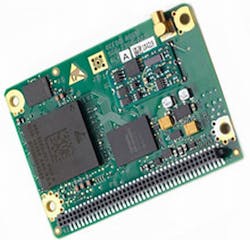Army seeks drastic reductions in the size and power consumption of embedded GPS modules
Officials of the Army Contracting Command at Aberdeen Proving Ground, Md., last Thursday issued a sources-sought notice (W56KGY-14--C008) for the Embeddable GPS Receiver In Mini-Ground Based Receiver Applications Module (Mini-GRAM-M).
The notice was issued on behalf of the Army Product Director of Positioning Navigation and Timing (PD PNT) at Aberdeen Proving Ground, which is reaching out to industry to find companies with the know-how to shrink embedded GPS receiver cards.
The Army's standard embedded GPS module today is called the SSI-GB-GRAM, which is short for Small Serial Interface Ground-Based GPS Receiver Application Module. It measures 3.4 by 2.45 by 0.6 inches.
Related: Honeywell to upgrade embedded navigation systems that combine GPS and inertial
The Mini-GRAM-M seeks to develop an embeddable GPS module that is about one-fourth the size of today's SSI-GB-GRAM. Army navigation want the next-generation Mini-GRAM-M GPS module to measure no larger than 1.5 by 1.5 by 0.5 inches.
The Mini-GRAM-M GPS module, moreover, must weigh no more than 50 grams, and use no more power than 900 milliwatts in transmission mode, no more than 500 milliwatts in receive mode, and have fewer than 30 pins for I/O. The ultra-small-form-factor Mini GRAM-M GPS module must be compliant to P(Y), M-Code, and C/A (YMCA).
The Mini-GRAM-M must be an M-Code GPS receiver that can be embedded into a wearable or handheld device for infantry soldiers, and installed to a circuit card such that it can substitute for an SSI-GB-GRAM in the Type II.
Related: Laser target designators augment GPS with celestial navigation to enhance accuracy
Companies whose engineers believe they have what it takes to design such a tiny-yet-rugged embedded GPS module should respond to the Army no later than 21 July 2014.
Email responses to the Army's Matthew Ebner at [email protected]. The subject line must read RFI W56KGY-14--C008 “Company Name”.
More information is online at https://www.fbo.gov/notices/e93468472c738d24078bd17c51f6e984.
